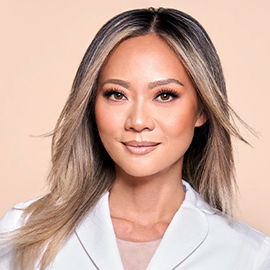As a revision plastic surgery specialist, I have seen many botched procedures, and sometimes the damage is irreparable. This is why I cannot emphasize how important it is to have plastic surgery done safely and correctly the first time. You only have one body- the results should never be compromised for the inconvenience.
When performing revision plastic surgery, I always wish I had been the one to perform my patient’s initial surgery because then I could have given my patient the results they hoped for and deserved. Communication, understanding the look a patient is trying to achieve, and creating a custom plan based on each person’s anatomy is extremely important.
I compiled my recommendations for having safe and successful plastic surgery to help patients navigate the process of choosing a plastic surgeon that will prioritize your safety and create the best possible results.

Dr. Cat’s Recommendations for Having Safe Plastic Surgery
- Do your research and make sure your plastic surgeon is Board Certified by the American Board of Plastic Surgery. This means that they have completed an accredited training program in Plastic Surgery and passed all certification exams. This is different from all other boards including Cosmetic Surgery or other Specialty Surgery, where the doctor may not have done any training in plastic surgery.
- Although your doctor may not require it – I always have all my patients get a complete History and Physical, lab work and medical clearance from their primary care doctor or internist. Depending on the age and medical history, for some patients, I also require an EKG, chest x-ray, stress test, additional lab work, psych clearance or hematology work up. I believe strongly in proper workup prior to surgery to endure a safe surgery and also have any necessary specialists coordinate care. Do not lie or hide any family or personal medical history from your surgeon – that will only increase your chances of a serious complication and it’s never worth risking your health or lift for elective plastic surgery.
- Ask about potential risks and what your surgeon does to prevent them – I always discuss and consider all potential risks of surgery with my patients. I am constantly thinking about how to prevent any complications, and all my surgical planning and techniques take these into constant consideration.
- Look carefully at the before and after photos when considering a surgeon. Look for cannula marks or irregularities or skin discoloration or alterations that are indicative of over-aggressive liposuction. The lower back and flank areas are usually the most telltale areas. Look carefully at the butt – if there was cellulite before there will be cellulite after and if the after are too smooth they were most likely photoshopped. Make sure the photos are high resolution in good lighting and medical photos. Do not use ones posted by patients on social media as a reference or any that are grainy or photoshopped.
- Don’t do too much at once – although it may seem convenient to do multiple surgeries all at the same time I would encourage you to focus on one surgery at a time. I know a lot of surgeons will combine large surgeries such as breast, tummy tuck, BBL, even leg lifts all at the same time. Increasing the total surgery time greatly increases the chance of serious complications like getting a blood clot or extensive fluid shifts. Also, having surgery on opposite sides of the body like tummy and butt or breast and butt makes it almost impossible to properly care for each surgery site post-op since you will always be lying on one. Also – Be kind to your body, each site requires a lot of energy and care to heal.
- Realistic expectations – understand and appreciate your own unique body. There are limitations to what can be changed safely based on your anatomy – take the time to understand what is realistically possible on your own body instead of comparing it with others.


